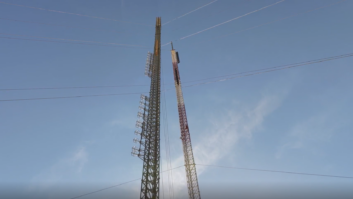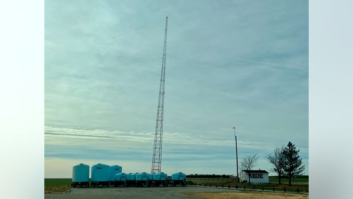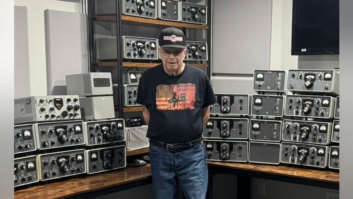Quantifying Your Workload: How Many Engineers Does It Take to Keep the Stations Running?
Radio has been in a tremendous state of change over the last decade in regards to engineering. Often workload demands have shifted from the programming departments to the engineering departments for much of the broadcast day, which is usually 24/7.
This comes as a result of station automation, voice tracking and satellite delivered programming. A station frequently operates in an automated, voice-tracked mode, and much of the responsibility for keeping things running smoothly is shifted from the programming departments to the engineering departments.
Not all radio stations and markets are equal in their engineering demands and requirements. The workload placed onto radio stations’ engineering departments cannot be accurately determined by a simple station-to-engineer ratio.
Therefore, some kind of a system was needed. That is what I have attempted to achieve.
Crunching numbers
A simple music FM station with good equipment, a reliable main transmitter and a back-up transmitter is not nearly as complex to maintain as a news/talk formatted station with a multi-tower, directional antenna system. The format, the reliability of the station’s equipment and amount of redundancy must be taken into account when estimating the workload and stress level on the engineering department.
(click thumbnail)
The umbrella of responsibilities of the engineering department now includes several computer networks at every installation, as well as maintenance of non — broadcast — related equipment. In some markets, a member of the engineering department, an IT specialist, spends most of his or her time working on computer-related issues that have little to do with traditional broadcast engineering.
We now have complex office computer networks and systems that are imperative to the smooth operation and efficiency of all departments in the market. In most cases, this adds the workload of another radio station to the engineer’s plate.
The nature of the broadcasting business requires immediate repairs to these systems. If the traffic department can’t produce tomorrow’s logs on their computers, the station won’t make any money the next day. When dealing with broadcast automation and computer systems, waiting a few days for a computer-repair person is not an option. If they go down, the station probably will go off the air, losing revenue and listeners every minute.
Reliable back-up systems can lessen the stress load on the engineering department and decrease the possibilities of lost revenue or FCC rule violations. Proper preventative maintenance is certainly an important part of this equation.
Station equivalence
An engineering reader may be familiar with the telephone company’s use of a “ringer equivalence” figure on a phone. If you connected several phones, and got a ringer equivalence greater than the rating on the phone line, the phones would not ring.
I like to think of this ratio system in a similar way. If you pile a greater “station equivalence” on the engineering department than it can carry, the stations will be more likely to spend increased time off the air due to error, and possibly violate FCC rules.
You also will be setting the engineers up for imminent burnout. Qualified, experienced broadcast engineers are in short supply. It can take months to find one, and years for an engineer to get completely familiar with a station’s environment. In light of this, running a revolving-door, burnout factory for engineers is not a good way to operate.
In order to set up a proper way to evaluate workload, a baseline had to be established. To simplify the equation, this baseline is set on the predicted workload of a single, music-formatted, mostly live FM station, up to 25,000 watts ERP, and with good equipment, reliable transmitters and back-up transmitter systems. This is a baseline, station equivalency of 1.0.
Determining “station equivalence” involves the establishment of additive factor guidelines. These additive factors are based on many years of experience by the author, interviews and input from other broadcast engineers with years of experience at a variety of stations. When all is taken into account, this system will provide a guideline for how many stations a broadcast engineering department can handle. It should predict when a market is heading for technical trouble and FCC fines.
While there are probably many others, here are some examples of additive factors. Add all these factors to the single station baseline of 1.0.
* If the station runs a news/talk format, add 1.0
* If the station does not have reliable back-up transmitters and other such systems, add 0.25
* If the station is a multi-tower directional AM (up to four towers) add 0.5
* Multi-tower directional AMs with more than four towers add, 0.1/tower
* FM stations 25,000 watts and over, add 0.25
* AM stations over 5,000 watts, add 0.25
* If the station has a second transmitter site to maintain, add 0.25
* If the station runs a music format and is voice tracked more than half of the day, add 0.25
* If the station is on satellite-delivered programming most of the day, add 0.25
* If the station is remote-broadcast intensive, add 0.25
* If the market has computer LAN systems, and just about all do, add 1.0 for each LAN
Other factors could be present, such as multi-hop microwave STL systems, excessive travel time to transmitters, etc. These have to be considered on a case-by-case basis, but should be taken into account.
It all adds up
Making the calculation for each station is simple. Add up the factors and get the station total. Next, add the other market factors. Consider the examples shown in the box for the Poplar Bluff, Mo., market.
Experience has shown that a talented, hard-working broadcast engineer working 40 to 50 hours a week can handle a total station equivalency figure of between 8 and 10, with corporate broadcast engineering and IT support. (This figure drops to between 6 and 8 without such support)
Having said that, the examples here show that one good broadcast engineer can take care of the stations listed in the Poplar Bluff market, with some degree of corporate support. Adding another market, or more stations, results in a burned-out engineer. Things may be overlooked due to time limits at the sites, including FCC compliance.
It should be noted that, in any professional position, some sort of planning must be made for vacation and sick days. When the market engineer is out of town or sick with the flu, alternate broadcast engineers must be prepared to handle the problems that arise. This is especially true during storm season (spring and early summer) when most people want to take a vacation.
With a little practice, proper estimations can be made for the adequate number of broadcast engineers that a given market should have for equipment maintenance and FCC compliance.








